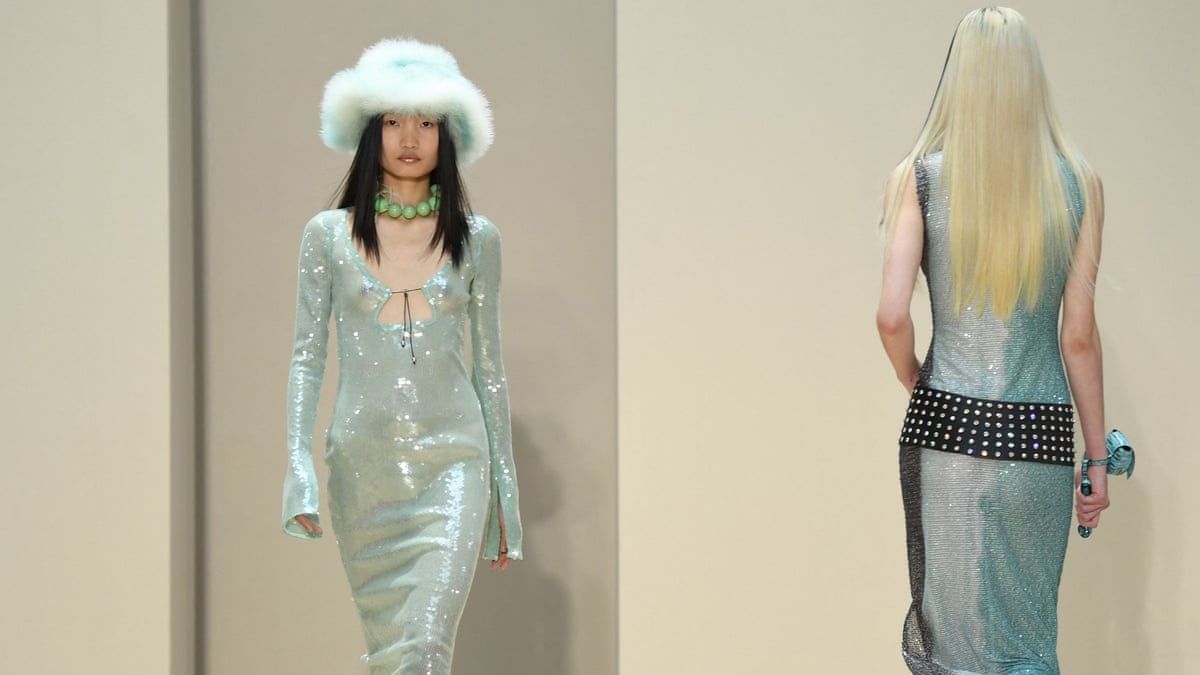
On a crisp evening at the Barbican Centre, a place renowned for its embrace of diverse art forms, the world of fashion took an audacious step into the realm of the avant-garde. The 16Arlington fashion show, a spectacle that unfolded beneath the stark contrast of black drapes and spotlights, was not just another event in the calendar of fashion weeks. It was a statement, a bold declaration of ‘I’m Not Sorry, It’s Human Nature,’ inspired by the provocative themes explored in Charlie Fox’s book ‘The Young Monster’. This show was a part of a broader trend this season, where fashion sought refuge in the hallowed halls of museums, but 16Arlington’s offering was unique in its ambition to transform the space into a parallel universe where the beauty and the monstrous coexisted.
A Parade of Beautiful Monsters
The theme of monsters, drawn from the depths of human imagination and fear, was brought to life through a palette of purple and mint green, leather skirts that whispered tales of rebellion, and layered prints that spoke a language of complexity. Among the standout pieces were a large black shearling coat that seemed to engulf the wearer in its embrace, mohair sweaters adorned with the image of a stray dog that tugged at the heartstrings, and footwear that blurred the lines between the elegant and the eccentric with fuzzy shearling pumps and boots. This sartorial narrative was a direct nod to Charlie Fox’s exhibition ‘My Head Is a Haunted House’ and his literary work, creating a runway that felt less like a presentation of garments and more like a walk through a fantastical gallery.
Beauty in Simplicity
The beauty direction for the show was a masterclass in the power of simplicity. Skincare brand 111skin provided mini-facials to the models, ensuring that their skin was a canvas of clean minimalism, ready to be enhanced but not overshadowed by makeup. Make-up artist Lauren Parsons wielded her tools from Code8 Beauty to craft looks that were simple yet striking, a testament to the idea that true beauty often lies in the subtle rather than the overt. It was Sam McKnight, however, who brought a touch of natural grace to the proceedings, styling the models’ hair in a way that celebrated their inherent beauty. The combined efforts of these artists resulted in an army of beautiful monsters, each embodying the show’s theme with their unique allure.
Transforming Spaces, Transforming Fashion
The decision to drape the interiors of the Barbican Centre in black, punctuated by the dramatic flair of spotlights, was a deliberate one. It served to create an environment that was immersive, one that allowed the audience to step into the world that 16Arlington envisioned — a world where the lines between beauty and monstrosity are blurred, and where fashion is not just about the clothes but the stories they tell and the emotions they evoke. This show, along with others held in museums such as Dunhill at the National Portrait Gallery and Harris Reed and Roksanda at the Tate Britain, signifies a shift in how fashion seeks to engage with its audience. It’s no longer just about the spectacle but about creating experiences that linger in the memory, challenging perceptions and encouraging conversations.
The 16Arlington show at the Barbican Centre was a vivid reminder of fashion’s power to transcend the boundaries of the conventional, to explore the depths of human nature and the complexities of beauty. Inspired by Charlie Fox’s meditations on the monstrous, the show was a celebration of the inherent contradictions within us all — the beautiful and the monstrous, the elegant and the eccentric. It was a declaration that in the world of 16Arlington, there is no need to apologize for being human. As the lights dimmed and the last model walked off the runway, what remained was the echo of a show that was as much an artistic statement as it was a fashion presentation, a fleeting glimpse into a world where the only rule is that there are no rules.
